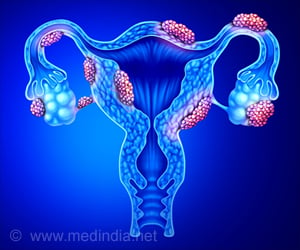Women who undertake a long-term weight training program produce more biologically active growth hormone.
Women who undertake a long-term weight training program produce more biologically active growth hormone, a finding that allows physiologists to understand why weight training improves muscle tone and optimizes metabolic function.
A study published in the December issue of the American Journal of Physiology-Endocrinology and Metabolism looked at different forms of growth hormone, used different testing methods, and varied weight training regimens. The research found that the role of growth hormone in women’s muscle development may be more complicated than previously thought.“We found that growth hormone was responsive to moderate and heavy exercise regimens having 3-12 repetitions with varying weight loading,” said the study’s principal author, William J. Kraemer. “Women need to have heavy loading cycle or workout in their resistance training routines, as it helps to build muscle and bone.”
Hormone comes in different forms
Growth hormone, produced in the pituitary, plays an important role in bone and muscle development, particularly in women. Men, on the other hand, rely to a greater extent on muscle-building testosterone. Since women rely on growth hormone to increase muscle and bone strength, the more growth hormone stimulated by a type of exercise, the better its outcome. Growth hormone also plays a role in fighting tissue breakdown, staving off stress fractures and improving metabolic function.
The growth hormone molecule is composed of 191 amino acids, but sometimes the molecules break apart to form smaller pieces. Other times these smaller pieces join together into larger pieces, including pieces that are larger than the original molecule. In addition, growth hormone can attach to binding proteins. It has been shown that there are more than 100 variants of the growth hormone molecule.
This study looked at growth hormone variants using two different tests that measured an immune response, known as immunoassays. Immunoassays are the tests physiologists have traditionally used in such studies. The researchers added a third test, the tibia line rat growth assay, to detect the biological action of the hormones, a novel approach to the study of growth hormones in exercise.
Advertisement
The researchers divided the participants into two groups: an upper body training group and a total body training group. The two groups were then subdivided: Half used heavier weights with fewer repetitions (up to eight) while the other half used lighter weights with a greater number of repetitions (up to 12).
Advertisement
The researchers made these findings:
• The presence of growth hormone varied with the training regimen.
• The presence of growth hormone varied with the test used to detect it. This suggests that pituitary function and the release of different sizes of growth hormone is altered with weight training.
• The body can adapt and produce more or less of certain sizes of growth hormone with weight training. In this study, the larger sized growth hormone variants appear to increase with heavy resistance training.
“This study shows that not every form of growth hormone responds in the same way, but is dependent upon the exercise protocol,” Kraemer explained. “This may forever change the way we look at growth hormone in the circulation with exercise and training.”
Source-Newswise
SRM










